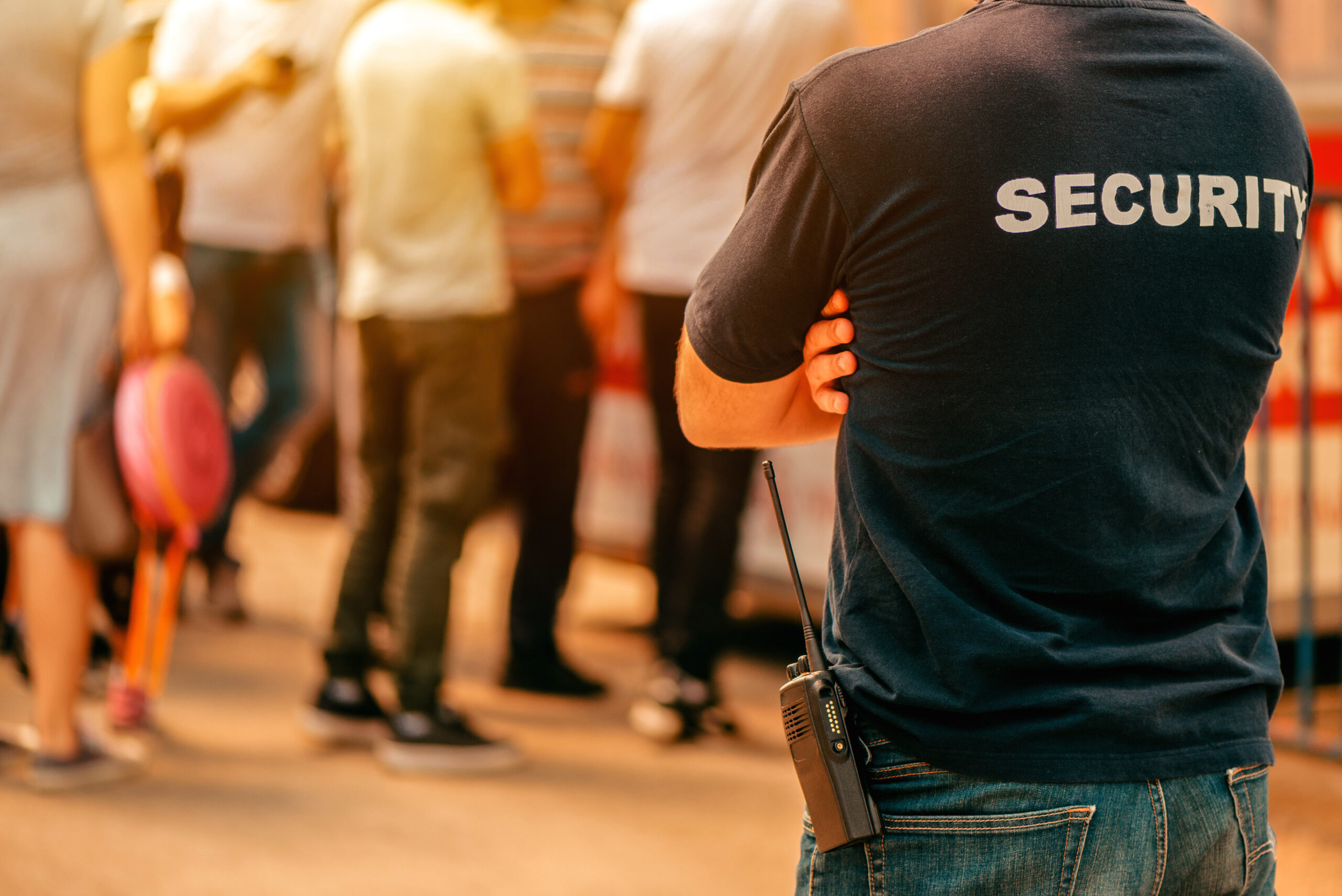Not Just for Schools: Evaluating Commercial Location Lockdown Systems

While we focus much of our attention as a company on school lockdowns and securing our nation’s schools; places of worship, government buildings, office complexes, and residential facilities have also become threats of those wishing to do harm to others. Those in charge of these facilities need the ability to lock them down when necessary, and the understanding of how best to implement strategies to keep their occupants safe should a lock down occur. In this article, we’ll focus on evaluating commercial location lockdown systems and procedures , which can include but is not limited to: malls, offices, stores, and other businesses which open to the public every day. These locations create a set of safety and security difficulties that require specific evaluation to ensure the safety of building occupants during a threat scenario.
Why do we need commercial location lockdown systems?
According to the FBI Office of Partner Engagement statistics, from 2000 through 2018, there were 121 mass shooting incidents at commercial locations which makes up 43.7% of all mass shooting incidents during that span, which is the highest ratio by over 20%. Mass shootings at business locations have killed or wounded hundreds, and are a continued cause for concern due to the ease of access and minimal security at these locations.
Providing a friendly customer-experience or work environment is understandably the primary concern for any business or office, but security and the ability to protect building occupants must also be of the utmost priority. Some of the solutions we will discuss in this article are theoretical in nature, but have the potential for implementation. Some of the solutions we will discuss would need to be provided by companies other than The LockOut Company. This article is not meant to highlight our solutions specifically, rather, it is meant to begin the discussion on how to secure locations that are the most prevalent targets for mass shooters, yet often receive the least attention.
Involve Law Enforcement Early and Often
Business locations vary widely and offer many unique security and building lockdown challenges. Some of these unique challenges include:
Malls
- Large open spaces
- Lack of easily accessible locations in which to lock down and stay safe
- Difficulty securing entrances due to desired ease of access by patrons
- Potential for confusion during a threat scenario
Single Business Locations
- Often open with only aisles as dividers
- Lack of safe lockdown locations
- Minimal security and exterior hardening, especially for smaller businesses
- Lack of lockdown training for employees
Office complexes
- Multiple floors leading to potential confusion during threat scenari
- Multiple independent businesses often operate from the same location creating the potential for multiple systems and protocols operating concurrently
- Potential distance for security to travel
- Large glass entry points
Open Spaces (e.g. Farmer’s Markets or Concerts)
- No physical entry points to secure
- Wide-open spaces
- Lack of lockdown safe zones
- Lack of security
While these locations present unique challenges, they also offer the potential for unique solutions. We’ll discuss some of these solutions throughout this article.
Security Spending
Unfortunately, dealing with the potential for threat situations must be a priority for businesses. Companies spend billions of dollars every year on cyber-security and theft prevention, and spend billions more to protect their business locations from physical threats.
This article is certainly not meant to make the point that businesses of all sizes are not focused on protecting customers. On the contrary, we feel it’s important to point out that most businesses spend, and spend freely to protect customers’ both physically and financially. We believe that businesses as a whole have their customers’ safety and security in mind, however, like schools or other locations, they may not be equipped to handle a worst-case threat situation such as an active shooter.
Entrance Hardening
One of the greatest concerns for larger, open commercial locations such as a mall or market is entrance security. Unlike a school lockdown or school lockout situation, which we focus on heavily, commercial entrances aren’t expected to be secured to these same levels. Patrons expect the ability to pass freely in and out of a building without the “inconvenience” of enhanced entrance security. However, when we highlight the statistics presented earlier in this article, we see that being the victim of a mass shooting at a commercial building is a much higher probability than the same event occurring at any other location.
Potential hardening measures must take customer experience into account, while attempting to maintain interior security. Innovative thinking is required for these locations and can include simple solutions such as increased security at entrance points, gun and weapon detecting security solutions similar to those found in airports, video surveillance, and human checkpoints such as those found at stadiums or events. Beyond these potential security measures, ensuring glass entry points are barricaded with ballistic shields to prevent unauthorized access to a rejected person and the ability to quickly lock all external entrances is vital to ensuring potential threats are kept out if a lockout is initiated.
Safe Lockdown Locations
If a threat does enter a building, and a lockdown is initiated, the ability to access safe locations in which to shelter becomes a primary concern. For larger locations such as malls, this includes locations in which larger groups can shelter themselves during a lockdown event. Naturally, securing individual stores creates an immediate safe zone, so ensuring these stores have instant notification that a lockdown has been initiated becomes important. However, those that may be in larger, open areas without immediate access to a secure location may need somewhere to shelter, at which time, the ability to enter any location quickly and lock it down becomes important. Stores must be equipped with the ability to be locked down immediately and efficiently. Whether his includes primary barricade measures such as heavy locked doors or gates, or secondary barricade devices designed to provide additional entrance hardening, these locations can become a safe-haven in the event of an attack.
Notification & Alert System
For patrons, especially those that may be in larger open areas like a food court in a mall, a lunch room or common area in an office complex, or any other open space we find common in commercial locations, immediate and clear notification of a threat situation is critical to their ability to reach a sheltered location before an attacker reaches them. This situation becomes considerably more difficult than many of the other locations we discuss because the lack of ability to train customers in lockdown procedures.
For a school, office complex, place of worship, or government complex, we have the ability to train occupants over time. For commercial locations, patrons come and go, making training nearly impossible. A notification system that gives a clear indication, both visually and auditory, and is triggered through multiple different events, such as a manual trigger by another building occupant via an application or button, through the removal of a physical barrier from its housing, by building security, or through some other measure, gives occupants the ability to access a secure location and lock it down, giving an attacker nothing but locked doors and secured entrances to deal with until police arrive.
Response Time
Any system implemented at a commercial location must take into account the potential lag time in which security will be moving to confront a threat and attempt to minimize that time, while also providing law enforcement with notification of the event so first-responders can make their way to the scene as quickly as possible. Often the first 911 calls can take minutes to be received as occupants primary concern is moving to a secure location, and may take several minutes to be processed with police arriving only after they have been notified by dispatch.
Implementing a lockdown system that immediately notifies police and occupants simultaneously, and gives police dispatch an immediate alert that a lockdown has occurred, removes any confusion in this process, and can shave minutes off police response time. While police are en route, armed security should be receiving similar alerts and location information of the threat, reducing confusion as to where to go, and providing the necessary information to confront the threat quickly, which can limit potential damage and loss of life in a worst-case scenario.
Planning & Preparation
As discussed in this article, one of the unique challenges to securing commercial locations, perhaps not including offices, is the lack of ability to implement training for building occupants. Consideration must be taken for both the diversity of those occupants, as well as the clarity of direction that must be given. Codes, or non-clear communication that a threat scenario is unfolding can steal precious seconds as occupants try to determine their best plan of action. Planning for this potential confusion, and attempting to minimize it can save lives in a threat event.
What’s Next?
Shootings and other lockdowns at commercial locations are the most common threat we face when it comes to mass shooting incidents. From office complexes to malls, we have an opportunity to protect those occupants from the harm of a dangerous individual. Implementing these systems and procedures is rarely simple, but it is possible to maintain a positive experience for shoppers, visitors, and employees while placing their safety as the number one priority.
Look for Part 4 of our series, as we evaluate lockdown procedures for residential complexes.


